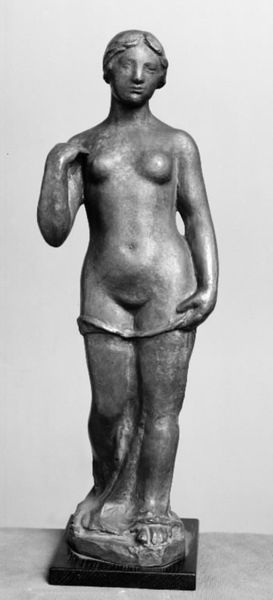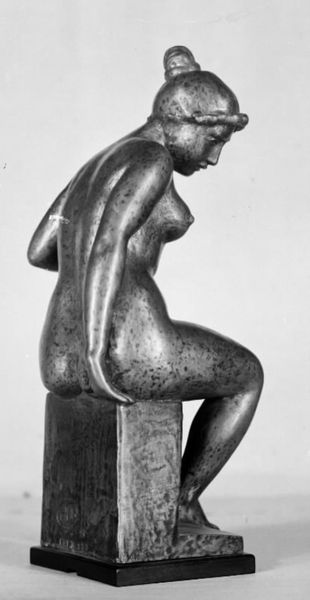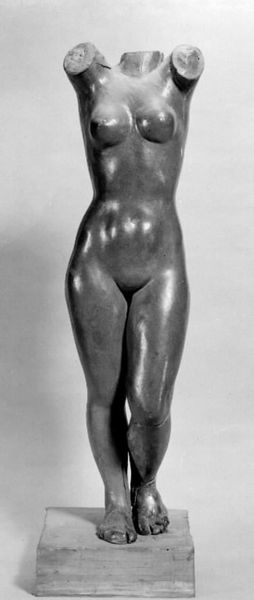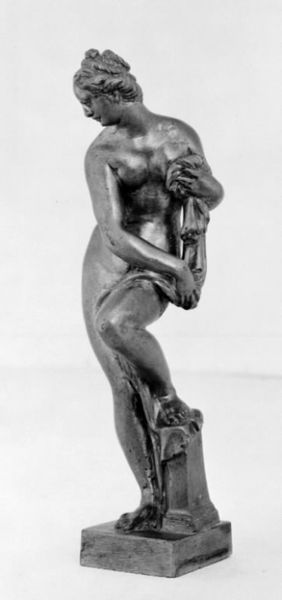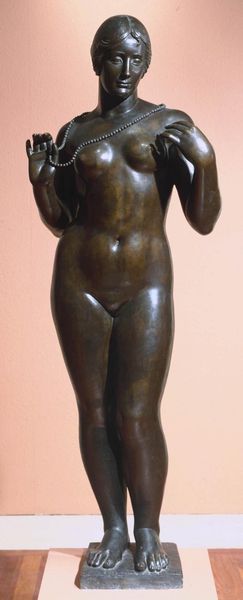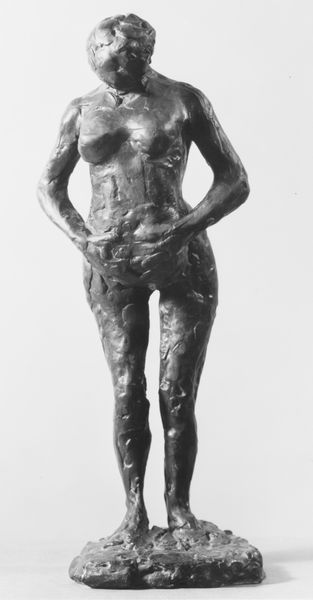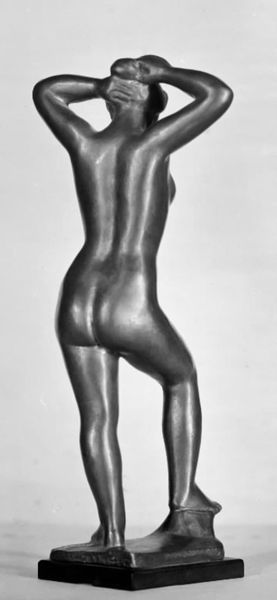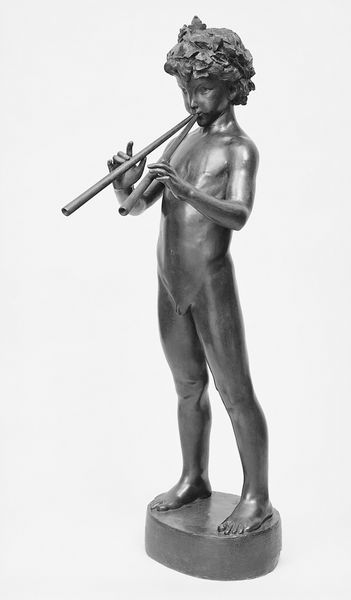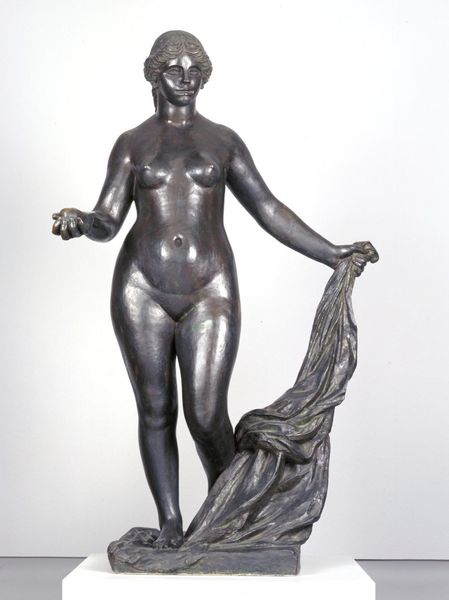
bronze, sculpture
#
sculpture
#
bronze
#
figuration
#
sculpture
#
nude
Dimensions: 63.5 cm (height) x 22 cm (width) x 27.5 cm (depth) (Netto)
Editor: We're looking at Joseph-Antoine Bernard's bronze sculpture, *Woman Carrying Water*, made between 1908 and 1912. She seems serene, yet there's a weariness suggested by her posture and the weight she carries. What aspects of the sculpture do you find most compelling from a formal perspective? Curator: The statue offers an exercise in subtly opposing curves and planes. The figure’s downward gaze complements the rounded water vessel. Notice how Bernard has subtly offset the axis of her body to produce the slight twisting that emphasizes the contrapposto pose. This enhances dynamism in the overall form. Editor: So the positioning of the figure creates a sense of movement and tension? Curator: Precisely. Note also the texture of the bronze – it's smooth in some areas, like her torso, emphasizing volume and shape, but rougher in others, suggesting a more earthly connection. This duality provides an intriguing contrast that plays with the perception of form and surface. How do these subtle material qualities influence your perception of the sculpture? Editor: I see how that contrast contributes to a sense of groundedness. It brings together an idealized figure and a raw physicality. That the overall impression lies in a study of opposing characteristics makes this more compelling. Curator: Yes. The way Bernard uses the figure and material to generate formal tensions really highlights the potential of sculpture. Editor: I'll definitely be paying closer attention to an artist's choices when looking at surface textures from now on.
Comments
No comments
Be the first to comment and join the conversation on the ultimate creative platform.



